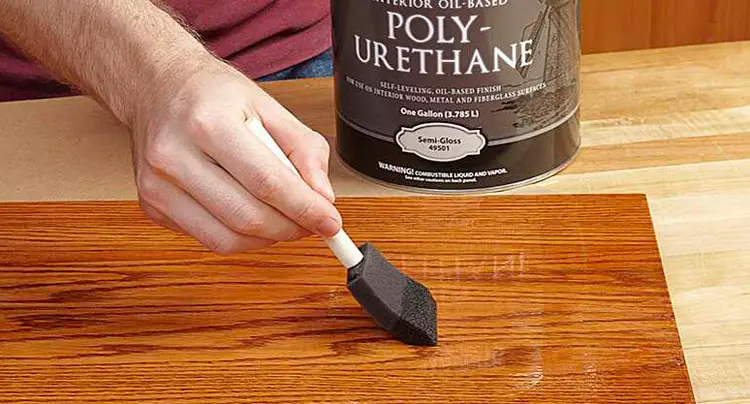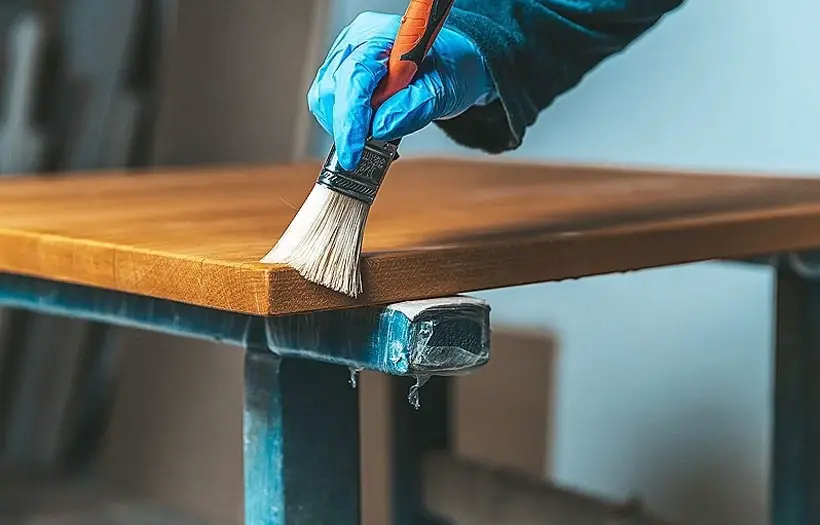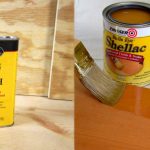Can You Put Polyurethane Over Lacquer- Achieving a Flawless Finish
It is not common to combine polyurethane and lacquer. People often receive poor results. But putting polyurethane over lacquer offers good protection, increases chemical resistance, and is a unique finish option sometimes.
In that sense, can you put polyurethane over lacquer? No. Polyurethane over lacquer is not a good idea because these two finishes do not adhere well. However, under certain conditions, such as for your outdoor project, these two will undoubtedly work. Furthermore, if you expect a low-luster finish, you can use them together.
Further reading will give you more insights on whether you should use polyurethane and lacquer together or should try something else. Stay tuned.
Can You Mix Polyurethane With Lacquer?
Generally, it’s not recommended to coat lacquer with polyurethane due to their incompatibility. Sometimes it has been observed that polyurethane and lacquers flake and peel.
Fortunately, there is a way to shield your lacquer finish from scratches and water damage. Instead of polyurethane, try using alkyd varnish. It is specifically made with polyester resin to ensure better adhesion and durability when applied over lacquer.

Unlike polyurethane, alkyd varnish forms a strong bond with the lacquer, providing effective protection for the surface beneath.
However, there have been cases where polyurethane has successfully adhered to lacquer finishes. But it is essential to note that these cases are relatively rare and that the outcome can be unpredictable.
So, if you want to try using polyurethane over lacquer, you should proceed with caution. And before applying it everywhere, test it in a small, inconspicuous area.
When Polyurethane Should Be Used Over Lacquer?
Although polyurethane is not the best material to mix with lacquer, it should be used over lacquer in certain situations. Here are a few examples of when using polyurethane over lacquer will work:

1. Outdoor Projects
If you are making outdoor furniture or a wooden structure, using polyurethane over lacquer can provide better protection against moisture, UV rays, and weathering. Polyurethane is extremely long-lasting and can withstand outdoor conditions better than lacquer alone.
2. Resistance to Oils and Acids
Polyurethane is an excellent choice if your project requires resistance to oils, acids, or other chemicals. It forms a protective barrier that protects against stains and chemical damage. This makes it suitable for surfaces such as countertops or tabletops that may come into contact with various substances.
3. Low-Luster Finish
If you want a non-shiny finish, polyurethane can help you achieve it. Unlike lacquer, which has a higher shine, polyurethane is available in matte or satin finishes, which have a more subtle appearance.
If you want a more understated or rustic look for your project, using polyurethane over lacquer can help you achieve that low-luster finish.
How To Apply Polyurethane Over Lacquer?

Applying polyurethane over lacquer does not appear to be difficult. You simply need to follow the procedure step by step.
Step 1: Prepare the surface:
To begin, sand your project with a fine-grit sandpaper. This will help to create a smooth surface for the polyurethane to adhere to.
Step 2: Make a base coat
Next, coat your project with a thin layer of lacquer or paint. Allow this coat to completely dry before moving on.
Step 3: Prepare the polyurethane
Mix the polyurethane well before applying it to ensure even consistency. Pour a small amount into a separate container to prevent contamination.
Step 4: Brush on the polyurethane
The polyurethane should be applied with even strokes using a natural bristle brush. The surface should be covered smoothly.
Step 5: Let it dry
Allow the first coat of polyurethane to dry completely, as directed by the manufacturer. This usually takes a couple of hours.
Step 6: Apply a second coat
After the first coat has dried, apply a second coat of polyurethane using the same method as before. This will increase durability and protection.
Step 7: Final touch
After the second coat has dried, gently buff the surface of your project with a clean cloth. This will assist in the removal of excess polyurethane and the creation of a smooth finish.
You should test the mixture on a small, discrete area or sample board before using it for the whole project. As a result, you can evaluate the color and make any necessary changes.
Pros and Cons Of Putting Polyurethane Over Lacquer
Here are a few advantages and disadvantages of using polythene and lacquers together.

The Benefits of Using Polyurethane Over Lacquer
Enhanced protection
Polyurethane adds an extra layer of protection against water damage and UV exposure. This helps to prevent underlying surface cracking, bubbling, and deterioration, which can lead to rust or rot.
Increased durability
Polyurethane outperforms lacquer alone in terms of durability. It produces a tougher and more resistant surface that is less prone to peeling, chipping, or damage when subjected to heavy wear and tear.
Uniform appearance
Applying polyurethane over lacquer can result in a smoother and more uniform finish. It evens out any imperfections or inconsistencies in the underlying lacquer, giving it a more polished and professional appearance.
The Drawbacks of Applying Polyurethane Over Lacquer
More effort and time
Using polyurethane over lacquer requires more effort and time than using lacquer or polyurethane alone. It requires thorough surface preparation, compatibility testing, and the labor-intensive application of multiple coats.
Possibility of compatibility issues
Polyurethane and lacquer might not bond well, leading to issues like poor adhesion or other problems. To avoid this, test the compatibility and properly prepare the surface before applying polyurethane.
If you’re wondering about using polyurethane over surfaces previously finished with lacquer, our article on why is my polyurethane sticky might provide insights that could help you troubleshoot and address potential issues. Moreover, if you’re facing challenges with polyurethane not drying properly and need solutions, our guide on what to do if polyurethane won’t dry is here to offer assistance. We understand the importance of achieving the best finishes and addressing specific application challenges, and our comprehensive resources are designed to help you navigate and make informed choices for your woodworking projects.FAQs
Here are some answers to common questions regarding polyurethane over lacquer. Hope this gives you more insight.
Q: Which is superior, polyurethane over lacquer or alkyd varnish over lacquer?
It all depends on what you need when deciding between polyurethane and alkyd varnish over lacquer. Polyurethane is extremely strong and chemically resistant, making it ideal for high-traffic areas.
Alkyd varnish has a classic appearance and is durable. Consider what you want and consult with experts to determine which option is best for your project.
Q: What kind of coating is possible over lacquer?
Over lacquer, you can apply different coatings such as polyurethane, alkyd varnish, shellac, or epoxy. However, it is critical that the lacquer and the coating work well together. To apply the coatings successfully, prepare the surface properly, and test if the coatings are compatible.
Q: Can polyurethane be applied over varnish?
No. It is generally not recommended to apply polyurethane over varnish. Varnish forms a tough protective layer that may or may not adhere well to polyurethane. For the best results, remove the varnish, prepare the surface, and apply polyurethane directly.
Final Words
To answer the question, can you put polyurethane over lacquer, it is generally not advisable to do so. Polyurethane and lacquer typically do not work well together and may not adhere properly. However, there are some exceptions, such as when using it for a low-luster finish or outdoor performance.
Keep in mind that lacquer may not adhere well to polyurethane, so properly preparing the surface is critical. If you decide to proceed, carefully follow the instructions provided. If you find this difficult, using an alternative is a great idea.




